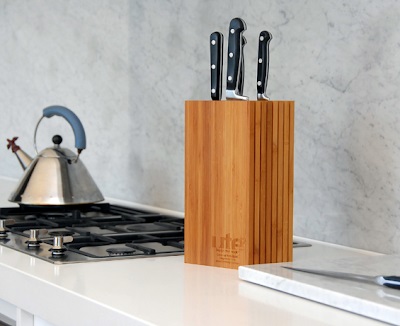How do I sharpen a knife?
QUESTION: How do I sharpen a knife?
ANSWER: A well-sharpened knife is the most important tool in your kitchen, but you don't have to sharpen the blade as often as you think. Sharpening involves cutting into the blade and removing metal from the edge, but if you do it on a regular basis, your blade will wear down to nothing.
I have my knives professionally sharpened every two years because I don't have the right equipment (or know-how) to get the blade back in shape.
Between sharpenings, you should get in the habit of steeling or honing any knife you use on a regular basis. If you've ever watched Top Chef, you've seen those chefs steeling their knives every time they use them.
You know that long, metal, or ceramic rod with the handle that came with your knife block? It's called a steel. If you pull the edge of your knife blade -- held at about a 30-degree angle to the steel -- across, it straightens the burr. The burr is the microscopic edge of the blade, and with use, it rolls over and dulls the blade. Honing with a steel straightens the burr. (You repeat this shaving motion on both sides of the blade an equal number of times.)
Getting the hang of the proper way to hold the steel and the motion of drawing the knife across it takes practice. Some people hold the steel out and draw the knife toward the body; I'm more comfortable holding the point of the steel vertically on the counter and drawing the blade horizontally back across the steel.
My favorite book of the moment is Peter Hertzmann's Knife Skills Illustrated. Peter is a knife skills instructor for Sur la Table, and his book is the most detailed and user-friendly I've ever seen on the subject of slicing and dicing veggies and cutting meat.
He gave me these tips for keeping a blade sharp and safe:
Don't put knives in the dishwasher. Soap erodes the edges of a knife.
Get rid of your glass cutting board. The hard surface pounds the edge of a knife flat.
Don't “chop" with a knife. Foods should be cut with a rocking, sawing, or slicing motion.
Magnetic strips or knife blocks with horizontal slots are best for storing knives because they keep pressure off the blade's edge. If you have a block with vertical slots, store the knife with the cutting edge facing up.

Source: www.thenest.com
